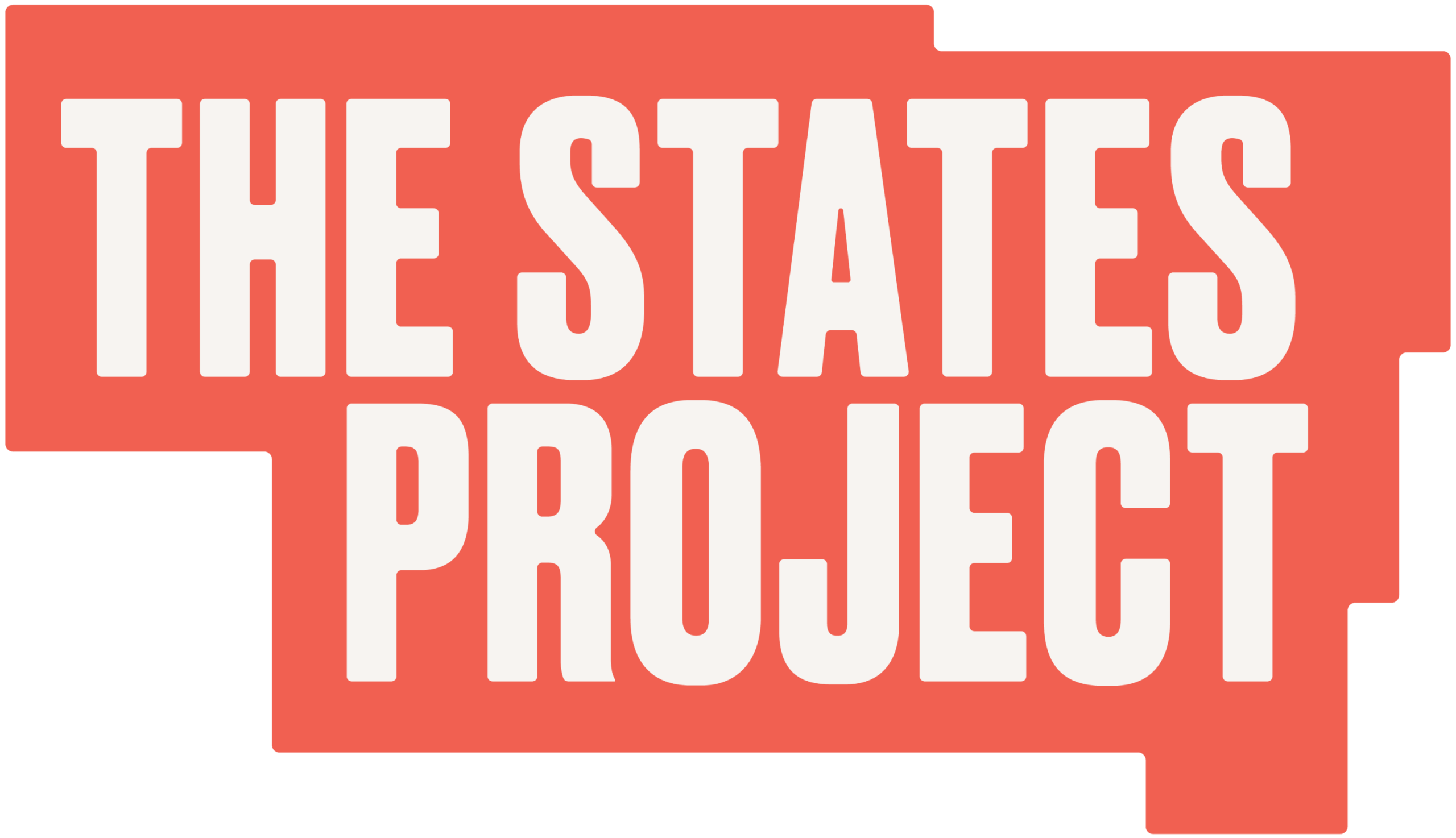25 State Legislative Races Will Determine Who Wins the White House in 2024 – and the Future of American Democracy
Forward Majority and The States Project are closing ranks around key state legislative targets, noted below, bringing new and innovative approaches to help Democrats build power in the states ahead of the 2024 election. Read the CNN article here. Both organizations have a track record of high performance since their respective inceptions in 2017, and are working to fortify fundamental, complementary areas of the state legislative ecosystem. One need look no further than the balance of power in state legislatures, with Republicans’ full control of chambers in every major battleground state, to appreciate the need for these types of ecosystem-level investments to turn the tide of state legislative power.
State Legislatures Are Ground Zero in the Fight to Protect Democracy
Democracy is sacred and a historical anomaly. In the past year, Trump’s Big Lie fueled unprecedented threats to American democracy, including undermining of democratic norms, a tidal wave of anti-voter policies, and threats of election subversion. The American experiment is threatened by a movement that is taking over the Republican Party to line up against democracy.
History tells us that a failed first attempt at a coup is often followed by a successful one. The risk of a second Trump presidency won outside of a free and fair election is an existential threat. As a slow-motion insurrection takes place in statehouses across the country, preventing it will take protecting, winning, and leveraging every single strategic foothold of power in state legislatures, which have been a hotbed of foot soldiers of the Big Lie.
Since the 2020 election, Trump and his allies have been explicitly pushing to change some of the barriers that stood in the way in their first attempt to overturn election results. This includes taking the certification process away from Governors, Secretaries of State or nonpartisan boards and bringing it directly under the control of gerrymandered Republican state legislatures.
Were the threat of legislative acts of election subversion not enough, the so-called ‘independent state legislature doctrine’ is quickly gaining traction on the right. This fringe interpretation of constitutional law posits that state legislatures are the supreme election authorities, able to overrule vote counts and choose their own winner. Under this theory, any Republican state legislature could overrule the will of the voters and state law, and send its own slate of electors to the Electoral College. Now this fringe idea is gaining mainstream consideration. No fewer than four Supreme Court justices (Alito, Gorsuch, Kavanaugh, Thomas) expressed support for it in various opinions as recently as March 2022. Clearly, the point at which these threats are within the realm of possibility, this country is in a very dangerous predicament, and democracy is hanging on by a thread. Even before consideration of 2022 midterm losses, it is unclear whether the Democratic Party can maintain sufficient power and leverage to hold back an anticipated insurrection and coup. But, fighting to secure critical footholds of power in state legislatures is the only path to preventing worst case outcomes.
The Opportunity: Newly Competitive Chambers
There are essentially 25 state legislative districts across three states that will determine who wins the White House – and the future of democracy. These are critical opportunities to flip state legislative chambers that are essential in Trump’s path to victory: Arizona, Pennsylvania, and Michigan. These are three of the states that Trump won in 2016, and Biden flipped to secure victory in 2020, all by razor-thin margins. These each have Republican-controlled legislatures.
- New Maps: The 2022 maps are equally competitive than those faced in 2020, when Democrats came within 3,000 votes of breaking the Republican trifecta through the State House. Democrats came within one seat of tying both the Senate and the House, the latter a chamber that has been in GOP hands for more than 50 years. New maps have drawn many incumbents out of their existing districts, which adds volatility to the already quirky dynamic of each State House district electing two at-large representatives.
- Path to Victory Across 6 Legislative Districts: In Arizona, the State House and Senate districts precisely overlap, providing a high degree of efficiency to target both chambers. In a 30 seat Senate chamber, Democrats have 12 seats in districts where Biden won by 10% or more. Assuming they can hold all of those seats even in a bad year, the heart of the battleground to win the additional 4 seats needed for a majority (3 to tie the chamber) is in the metro Phoenix area. There are two districts (LD-9 and LD-13) that are strong battleground districts, along with LD-4 and LD-2, which are priority targets for this year.
- New Maps: The Michigan Senate maps are one of the best redistricting outcomes for Democrats in the state legislative battleground. Michigan’s nonpartisan redistricting commission has delivered newly competitive maps; in the 38-seat State Senate chamber, Biden carried 20 seats in 2020, while Trump carried 18.
- Path to Victory Across 4 Senate Districts: As an illustration, in the Senate, Democrats need 19 of 38 seats to tie, and 20 to win. In that context, there are 16 strong Dem districts (Biden 10%+) that are treated as a floor; there are 5 other districts that Biden won – Democrats need to win 4 of those for the majority, and can hopefully expand the delegation and have real potential to flip, even in a tough electoral environment.
- New Maps: The Pennsylvania redistricting commission has now completed redistricting for the next ten years. The State House maps are newly competitive and slightly lean toward Democrats with Biden winning a majority of districts in 2020.
- Path to Victory Across 15 House Districts: Most of the competitive seats are in the Philadelphia or Pittsburgh suburbs, with a clear path to the majority. Out of 203 seats, Biden won 87 by 10%+, which is treated as an illustrative floor. To get to the additional 15 seats, Democrats need to win all but 1 of the Biden-won districts. (Notably, if you look at the 2020 Attorney General race, with Josh Shapiro – who is the Democratic nominee for governor this year – the floor for Democratic performance is significantly higher, with him winning 96 districts by 10%+.)
What it Takes to Win
Forward Majority and The States Project are closing ranks to win power where it counts in the key targets noted above. This effort requires a three pronged strategy: (1) direct candidate support, mentorship, and best practices; (2) strategic interventions that raise the floor on Democratic performance across the state legislative battleground – building advantage at the district level so the electorate to flip chambers is available, particularly important in a tough electoral environment; and (3) a legislative, legal and communications strategy to arm legislators to push back against the most pernicious tactics aimed at suppressing votes, pushing disinformation, and subverting election results. These elements are detailed below.
I. Thriving Hard-Side: Higher Impact Caucuses and Campaigns (The States Project)
Direct Candidate Support: Direct spending by campaigns and those coordinating with them (“hard-side spending”) is uniquely potent because The States Project (TSP) can work with the candidates to fill the most pressing gaps and also ensure that dollars are spent on the most data-backed tactics. In these states, TSP is able to deploy unlimited, coordinated, hard-side spending directly to campaigns and caucuses, because of state campaign finance laws and The States Project’s funding stream of individual, disclosable dollars.
Incentives to Drive Improved Performance: TSP makes campaigns better funded and more effective. Rather than run its own programs, TSP identifies the most effective, data-driven tactics that campaigns and caucuses can adopt. TSP offers them access to cutting-edge research and help design evidenced-based campaign plans. This means that TSP’s impact goes beyond financial contributions. It becomes game-changing when paired with political expertise, mentorship with candidates and staffers. A third-party assessment found that TSP’s endorsements correlated to a positive increase in vote share of around two percent in 2020. TSP’s innovative Door Knocking Challenge contributed more to candidates who personally door-knocked the most doors in Virginia in 2021. This resulted in TSP endorsees personally knocking an average of 1,657 doors a month compared to the 971 average of non-endorsees.
Early Interventions in Majority Making Districts: TSP is also investing in targeted early interventions, including candidate recruitment and deep canvassing. TSP shares data-driven best practices to identify the candidates most likely to over-perform with in-state partners in Arizona, Michigan, and Pennsylvania and invested in their ability to lead recruitment in their regions. Through early deep-canvassing pilots, TSP has driven thousands of conversations with voters on issues like increasing the minimum wage, affordable housing and healthcare, and capping prescription drug costs. This early investment extended staffing, and the ability to interact with voters, in critical districts by 8 months. And, because it’s coordinated, what is learned from these conversations will inform the ultimate campaign messages to voters down the stretch.
II. Raising the Floor on Democratic Performance at the District Level (Forward Majority)
As seen in 2020, well-funded candidates and campaigns are essential, but often insufficient to win full Democratic majorities in the most consequential states. With that in mind, the areas outlined below are crafted to boost the performance of Democratic candidates at the district level.
Voter Registration in the State Leg Battleground: Voter registration efforts have been a tremendous success and key piece of Democrats’ victories over the past decade. However, voter registration is a tool that Democrats have never systematically deployed at scale to win state legislative races. This is a function of how the overwhelming majority of traditional voter registration efforts are funded (501 c3 / non-partisan dollars) and incentivized (lowest cost registrations), which steers programs to base, urban geographies. This leaves Democrats at an inherent deficit in state legislative districts that lie in the path to majorities. Forward Majority has identified over 500,000 likely Democratic unregistered voters in the zip codes of the targeted districts outlined above in the Arizona, Michigan and Pennsylvania state legislative battleground. This is a groundbreaking area, which promises to be hard, but has tremendous potential. To capture the opportunity, Forward Majority is running experimental pilot programs now, with plans to quickly scale in these three states in the months ahead. More details are outlined here in Forward Majority’s Blueprint for Power.
Long Term Communications to Diffuse Propaganda and Boost the Democratic Brand: Democrats traditionally try to get out a message in the closing weeks of an election, while effectively ceding the mic to Republicans for 22 out of 24 months of a cycle. This challenge is exacerbated by right-wing propaganda, which is particularly potent in down-ballot races, where candidates are less clearly defined. Forward Majority is building a long-term communications operation to build a narrative, neutralize propaganda, and boost the Democratic brand in target districts. This communications focuses on key audiences, including new Democrats that Forward Majority helped bring onto the rolls, low-information voters, and swing voters / ticket-splitters.
Muscular Campaigns: For a variety of reasons, including the fact that not all dollars can be used by hard-side campaigns and caucuses, independent expenditures are a critical complement to the hard-side. Forward Majority will continue to run muscular, cutting edge campaign programs in key races to help flip these chambers. While run independently of candidates and party committees (and those, like TSP, that work with them), this work layers on top of and complements the high-impact hard-side work done by TSP, and is part of the continuous funnel of voter engagement described above through the long term communications work. Since its inception, Forward Majority has been at the frontline of building the evidence base in down ballot races, and has embedded randomized control trials in their programs to hone approaches to persuasion and turnout. They will continue to double down on data, innovation and campaigns expertise to help Democrats compete for every vote in tipping point races.










